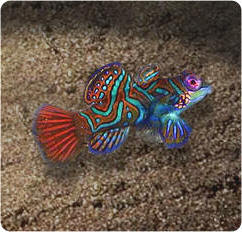 All of us have seen fish. They are very elegant in their colouration and many people like to keep them as pets. A fish may be identified as an aquatic vertebrate animal whose body may or may not be covered by scales and bears two sets of paired fins and many unpaired fins. fish are cold blooded or ectothermic animals which mean that their body temperature keeps on changing with the temperature of water. fish are distributed in all aquatic habitats ranging from the mountain streams to the deepest oceans. About 32,500 species of fish are known and they together form the largest diversity of the organisms in comparison to other classes of vertebrates. fish are also caught by the fish keepers and are kept in aquaria as a source of decoration. They are also associated with movies, cultures and religions.
All of us have seen fish. They are very elegant in their colouration and many people like to keep them as pets. A fish may be identified as an aquatic vertebrate animal whose body may or may not be covered by scales and bears two sets of paired fins and many unpaired fins. fish are cold blooded or ectothermic animals which mean that their body temperature keeps on changing with the temperature of water. fish are distributed in all aquatic habitats ranging from the mountain streams to the deepest oceans. About 32,500 species of fish are known and they together form the largest diversity of the organisms in comparison to other classes of vertebrates. fish are also caught by the fish keepers and are kept in aquaria as a source of decoration. They are also associated with movies, cultures and religions.The term fish applies to an animal which suggests any non-tetrapod craniate that bears gills throughout its life and has fins instead of limbs. Like other vertebrates fish are of different types and are classified according to their characters. The main types of fish found in the modern world are the hagfish, sharks, rays, lampreys, ray-finned fish, coelacanths and lungfish. A fish possesses streamlined body to swim rapidly in the aquatic environment, has gills or accessory respiratory organs for getting oxygen and have paired as well as unpaired fins. The paired fins include the pectoral and the pelvic fins. The unpaired fins are the dorsal, anal and the caudal fins. Generally the body of the fish is covered with scales but there are some fish also which lack scales and are scale less. The jaws are very well developed in the fish. They are oviparous.
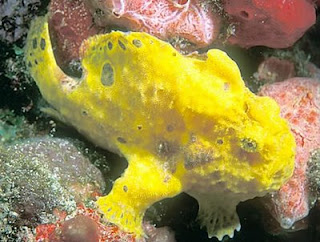 Generally fish are cold blooded vertebrates but exceptions always exist. Tuna, swordfish and some species of sharks have adaptations towards the warm blooded category. The streamlining and the swimming efficiency of the fish also varies for example tuna, salmon and jacks can swim 10-20 body lengths per second while the eels and sharks cannot move more than 0.5 body lengths per second. Some species of fish have the capability of extracting oxygen directly from the air as well as through other substances as they bear some specialized structures for this purpose for example lungfish have paired lungs, gouramis have labyrinth and catfish extract oxygen through the intestine or the stomach. The shape of the body as well as the arrangement of the fins is also variable. The scales are of different types like the placoid, cosmoid, ganoid, cycloid and ctenoid. There are certain fish also which live on land like the mudskippers which live on the mudflats and on being disturbed hide themselves in their underground burrows.
Generally fish are cold blooded vertebrates but exceptions always exist. Tuna, swordfish and some species of sharks have adaptations towards the warm blooded category. The streamlining and the swimming efficiency of the fish also varies for example tuna, salmon and jacks can swim 10-20 body lengths per second while the eels and sharks cannot move more than 0.5 body lengths per second. Some species of fish have the capability of extracting oxygen directly from the air as well as through other substances as they bear some specialized structures for this purpose for example lungfish have paired lungs, gouramis have labyrinth and catfish extract oxygen through the intestine or the stomach. The shape of the body as well as the arrangement of the fins is also variable. The scales are of different types like the placoid, cosmoid, ganoid, cycloid and ctenoid. There are certain fish also which live on land like the mudskippers which live on the mudflats and on being disturbed hide themselves in their underground burrows.The body size of the fish varies from as small as the stout infant fish which is only 8mm long to as huge as the white shark which is 16meter long. Many animals are often confused with fish as the term fish is associated with them like the starfish, jellyfish, cuttlefish, shellfish. Strictly speaking they are not fish. There are at present 28,000 extant fish of which 27,000 are the bony fish, 970 are the sharks, rays and chimeras and 108 are the hagfish.
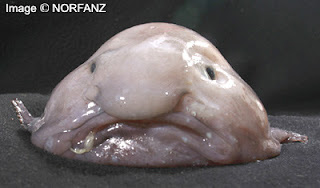 About 64 families of fish are monotypic as they contain only one species. The overall total of the fish comes to about 32,500 at present.
About 64 families of fish are monotypic as they contain only one species. The overall total of the fish comes to about 32,500 at present.fish respire through gills present on either side of the pharynx. The gills are made up of thread-like structure known as filaments. Each filament is supplied by the capillary network which increases the surface area for the easy exchange of oxygen and carbon dioxide. fish draw the oxygen rich water through their mouth and pump it over the gills. In some fish the capillary blood flows in opposite direction through counter current system. The gills pass the water poor in oxygen to the gill openings present on the sides of the pharynx. Sharks and lampreys have multiple gill openings while some fish have single gill opening. The gill openings are covered by a protective covering called as operculum.
The breathing mechanism is also variable in fish. The skin of anguillid eels has the ability to absorb oxygen. The buccal cavity of the electric eel has the potential to absorb oxygen. Some fish like the perches, cichlids are also able to breathe air directly but majority of the fish are dependent on the oxygen dissolved in water. Some air breathing fish also hide themselves under the moist burrows and show a temporary hibernation mechanism and when plenty of water is available they show aestivation by returning to water. fish may be obligate or facultative air breathers. The African lungfish comes under the category of obligate air breathers as it comes to the surface of water for gulping out air otherwise it will die due to suffocation. Facultative air breathers comprise the heavy section of the fish as most of the fish breathe oxygen dissolved in water as they conserve energy by not coming to the surface of water to gulp air. The catfish in absence of dissolved oxygen can rely on oxygen dissolved in gills.
The circulatory system of the fish is in the form of a closed loop. The heart pumps blood through this single loop to the whole body. The fish heart consists of four parts including two chambers, one entrance and one exit opening. The first part of the heart is the sinus venosus which is a thin walled sac and collects blood from the veins of the body before passing it to the second part which is atrium. Atrium is a large muscular chamber which sends blood to the third part which is the ventricle. The ventricle is thick walled and it passes blood to the fourth part the bulbous arteriosus. From here the blood is passed to the aorta and then to the gills for oxygenation.
Jaws in fish are very well developed and allow them to eat a wide variety of food materials whether it is a plant or an animal. Ingestion of food occurs through the mouth and it is broken down into the oesophagus. The digestion of food occurs in the stomach and in some fish characteristic finger like projection are present which secrete the digestive enzymes. These projections are called as pyloric caeca. Pancreas and liver also secrete enzymes and help in the easy digestion of the food material. The whole process of digestion and absorption ends in the intestine. The waste material of fish is rich in ammonia which means they are ammonotelic. The waste material leaves the body either through the gills or through the kidneys. Saltwater fish lose water through osmosis and reverse happens in case of freshwater fish. The kidneys excrete dilute quantity of urine. The scales in fish originate from the skin.
The brain of fish is comparatively very small as compared to other vertebrates but some larger fish like the sharks, mormyrids have larger brains as compared to that of the birds. The fish brain is made up of several parts. The front region is occupied by the olfactory lobes which receive and process the signals from the nostrils via two olfactory nerves. The olfactory lobes are generally very large in sharks, hagfish and catfish as they depend solely on smell for catching their prey. Right behind the olfactory lobes is a two-lobed structure called as the telencephalon which is equivalent to the cerebrum of higher vertebrates. It is associated with olfaction. Both the olfactory lobes and the telencepahlon comprise the forebrain of fish.
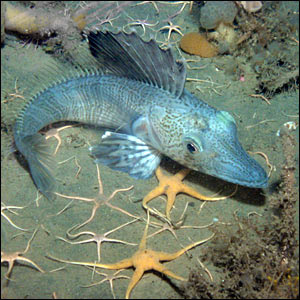 The forebrain is connected to the midbrain via diencephalon. Diencephalon controls the function of hormone regulation and homeostasis maintenance. Pineal body is present just above the diencephalon and it detects the light changes, circadian rhythms and colour changes. The midbrain or mesencephalon consists of two optic lobes which are large in those fish which hunt by sight like the rainbow trout and the cichlids. The hindbrain or the metencephalon performs the function of swimming and balance maintenance. The cerebellum is the largest structure of the brain and it is single lobed. Hagfish and lampreys have small cerebellae while mormyrids have heavy cerebellae as it is associated with their electrical senses. The posterior part of the brain is the brain stem or the myelencephalon. It governs the functions of muscle coordination along with respiration and osmoregulation.
The forebrain is connected to the midbrain via diencephalon. Diencephalon controls the function of hormone regulation and homeostasis maintenance. Pineal body is present just above the diencephalon and it detects the light changes, circadian rhythms and colour changes. The midbrain or mesencephalon consists of two optic lobes which are large in those fish which hunt by sight like the rainbow trout and the cichlids. The hindbrain or the metencephalon performs the function of swimming and balance maintenance. The cerebellum is the largest structure of the brain and it is single lobed. Hagfish and lampreys have small cerebellae while mormyrids have heavy cerebellae as it is associated with their electrical senses. The posterior part of the brain is the brain stem or the myelencephalon. It governs the functions of muscle coordination along with respiration and osmoregulation.Most fish have very well developed sense organs. All the diurnal fish have well developed colour vision. Many fish are gifted with chemoreceptors that are responsible for extraordinary senses of taste and smell. Although fish possess ears but they are not able to hear well. The sensory receptors form the lateral line system in fish which detects minute currents and vibrations as well as movements of the nearby prey. Sharks and catfish can also detect low-level electric currents. Electric eels produce electric currents. Experiments have revealed that fish have good powers of learning and memory.
The experiment conducted by William Tavolga on the toadfish suggests that fish have the ability for pain and fear responses. According to a study performed by the Scottish researchers at the University of Edinburg and Roslin Institute on the rainbow trout in 2003 suggests that it shows behaviour associated with pain like other animals. The researchers injected bee venom and acetic acid in the lips of the rainbow trout. The fish immediately started rubbing its lips on the walls of the tank and this response was taken as the behaviour towards relieving pain by the researchers. The firing of the neurons resembles similar as found in humans. Professor James D. Rose however, argues that fish do not feel pain as they lack neocortex.
Fish have paired set of alternately arranged contacting muscles on both the sides of the backbone. These contracting muscles form S-shaped curves which move down to the body and help in swimming. Fins also increase the tail surface area for effective swimming. Streamlined body reduces the force of friction. Many bony fish have a swim bladder which is filled with gases and helps in maintaining buoyancy. Although fish are ectothermic but exceptions always exist. Some fish are amphibious also like the mudskippers. Some fish maintain their body temperatures at a higher range. All sharks of the family Lamnidae are endothermic. The degree of endothermy varies in different fish, although it is costly but it provides the advantages like increased muscle strength, higher rates of central nervous system processing and higher rates of digestion.
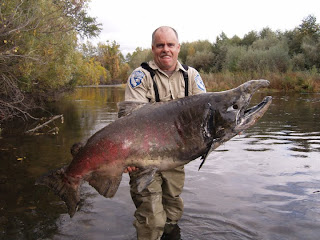 The reproductive organs of the fish include testes and ovaries. In majority of species the gonads are of similar size and they may be partially or totally fused. Secondary sex organs are also associated with the reproductive organs in order to increase its fitness. In terms of spermatogonia distribution two types of testes are found in the teleosts. In the first type the testes are found all along the seminiferous tubules while in other type testes is present along with the distal portion of the seminiferous tubules. The ovaries in fish are of three types. They may be gymnovarian, secondary gymnovarian and cystovarian. In the gymnovarian ovary the oocytes are released directly into the coelomic cavity from where they enter the ostium and are finally eliminated through the oviduct. Secondary gymnovarian ovary releases ova into the coelom from where they enter directly into the oviduct. Gymnovarian ovaries are primitive typwe ofd ovaries present in the lungfish, sturgeons and the bowfins. Cystovarian kidneys are the characteristics of the majority of teleosts as here the ovary is directly connected with the oviduct.
The reproductive organs of the fish include testes and ovaries. In majority of species the gonads are of similar size and they may be partially or totally fused. Secondary sex organs are also associated with the reproductive organs in order to increase its fitness. In terms of spermatogonia distribution two types of testes are found in the teleosts. In the first type the testes are found all along the seminiferous tubules while in other type testes is present along with the distal portion of the seminiferous tubules. The ovaries in fish are of three types. They may be gymnovarian, secondary gymnovarian and cystovarian. In the gymnovarian ovary the oocytes are released directly into the coelomic cavity from where they enter the ostium and are finally eliminated through the oviduct. Secondary gymnovarian ovary releases ova into the coelom from where they enter directly into the oviduct. Gymnovarian ovaries are primitive typwe ofd ovaries present in the lungfish, sturgeons and the bowfins. Cystovarian kidneys are the characteristics of the majority of teleosts as here the ovary is directly connected with the oviduct.The development of the oogonia differs in different groups of fish and it provides the details of the maturation as well as fertilization process. Changes in the nucleus, ooplasm and surrounding layers determine the maturation of the oocyte. The postovulatory structures that are formed after the release of the oocytes are absorbed by the process of apoptosis. Some fish are hermaphrodite as they have both the testes and ovaries in their bodies at different stages of their life cycle. About 97% of the fish are oviparous. The common oviparous fish are eels, tuna, goldfish, cichlids and salmon. In these fish fertilization occurs outside the body of the mother as both the parents shed their gametes in the surrounding water. Some oviparous fish also practice internal fertilization method as the male uses some sort of intromittent organ for delivering sperms into the genital opening of the female. Skates and horn sharks come under this category. In these fish male uses claspers for delivering the sperms into the female's body.
Marine fish produce large number of eggs in the open water column and the diameter of eggs is about 1mm. The newly hatched young ones of the oviparous fish are called as larvae. They are very delicate and carry a yolk sac for their nourishment and are very different in appearance as compared to the adults. The larval period is very short and the larvae rapidly lose their yolk sac and grow to juvenile stage and start feeding on the zooplanktons. Since the zooplanktons are present in insufficient quantity many juveniles lose their lives due to starvation. Guppies, coelacanths and the angel sharks are ovoviviparous. Here the eggs develop inside the mother's body after the internal fertilization and receive only yolk as a means of nutrition.
Some species are viviparous. In some species the mother retains the eggs and nourishes the embryos. Lemon sharks, splitfins and surf-perches are typically viviparous fish here the embryo receives nourishment through a placenta like structure as found in mammals. In some viviparous sharks the developing embryos eat other eggs produced by the mother and this phenomenon is called as oophagy. The young ones of the grey nurse show intrauterine cannibalism where the stronger young one devours weaker siblings. The immune system of fish is also variable. The jawless fish lack true lymphoid organs. The erythrocytes, macrophages and the plasma cells are produced in the anterior part of the kidney and somewhere in the gut and they bear close resemblance with the bone marrow as in case of the hagfish. The cartilaginous fish have well developed immune system and the epigonal organ surrounding the gonads, Leydig's organ within the walls of the intestine and the spiral valve of the intestine are responsible for the production of the immune cells. The cartilaginous fish have well developed spleen and thymus gland which produce lymphocytes, macrophages and the plasma cells. The bony fish show further advancement in case of immune system. Apart from the spleen and the thymus gland, scattered mucosal cells in bony fish also act as immune tissues.
Like other animals fish also suffer from the attack of parasites as well as diseases. To remain free from diseases they have well developed defence system. The skin and the scales as well as the mucous secreted by the epidermis prevent the entry of micro-organisms inside the body of fish. The immune system also plays an essential role in fighting against the infections. The fish are believed to have evolved from the coral-like sea squirt.
According to a report of IUCN in 2006, 1,173 species of fish are under the danger of being extinct. White sharks, Atlantic cod, Devil's Hole pupfish are some of the threatened species. Overfishing is the very dangerous enemy of cod and tuna. Overfishing is responsible for the population collapse of fish as the progeny production is at risk.
Water pollution, construction of dams, removal of water for human utilization and introduction of the exotic species is also responsible for habitat destruction of the native species and all this leads to population declination of fish. The introduction of the Nile perch in the Victoria Lake has exterminated the cichlid population of the lake.
Fish have also been found associated with the culture and religion. The assemblage of fish in an area merely for a matter of feeding and nesting is termed as aggregation. Fish shoals or schools are formed depending on the degree of their organization. Shoals are loose organizations where a fish adjusts its behaviour and swimming movements in response to the others members of a group. Schools of fish are tight organizations comprising all the movements and other activities in the same direction. Both shoals and schools benefit the fish in many ways.



No comments:
Post a Comment